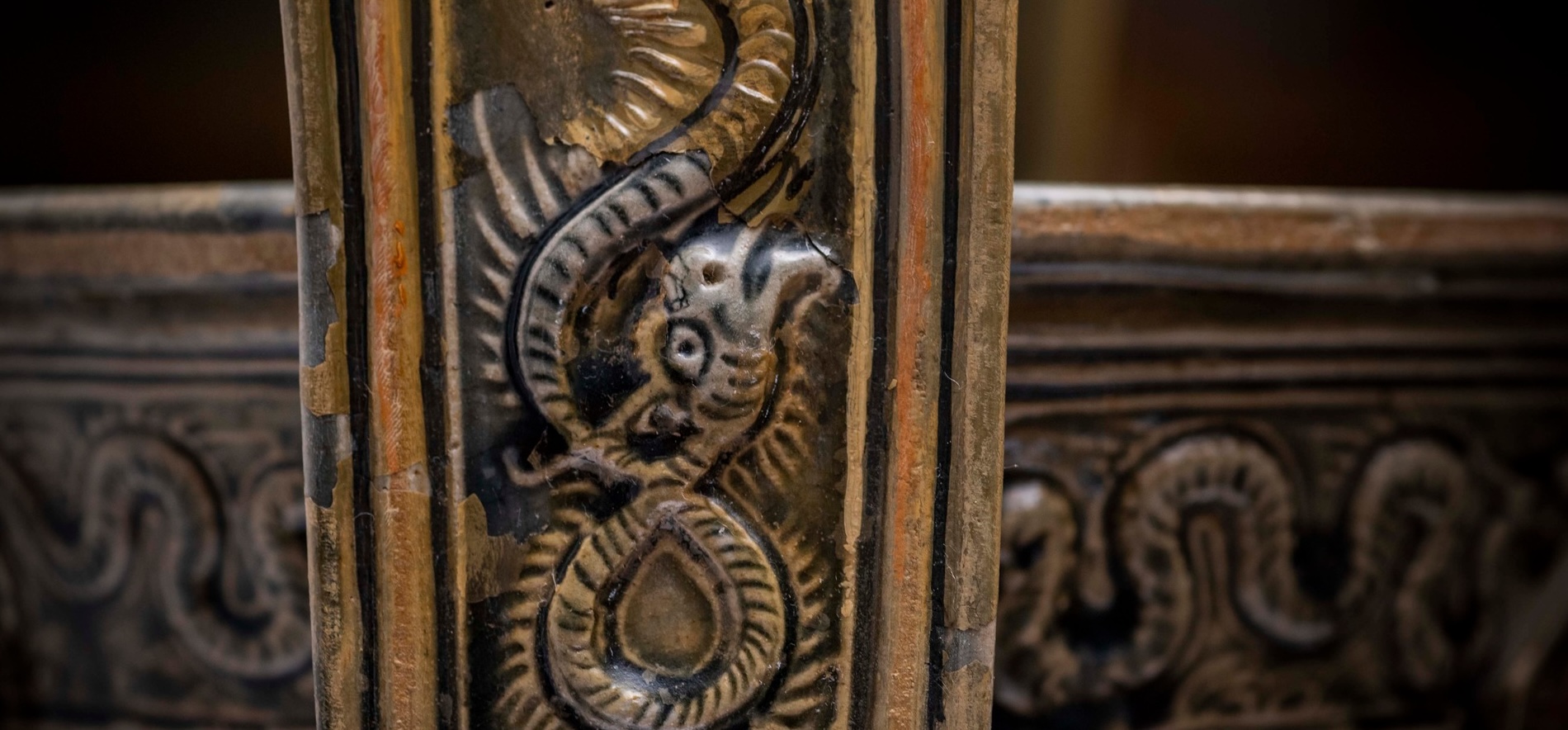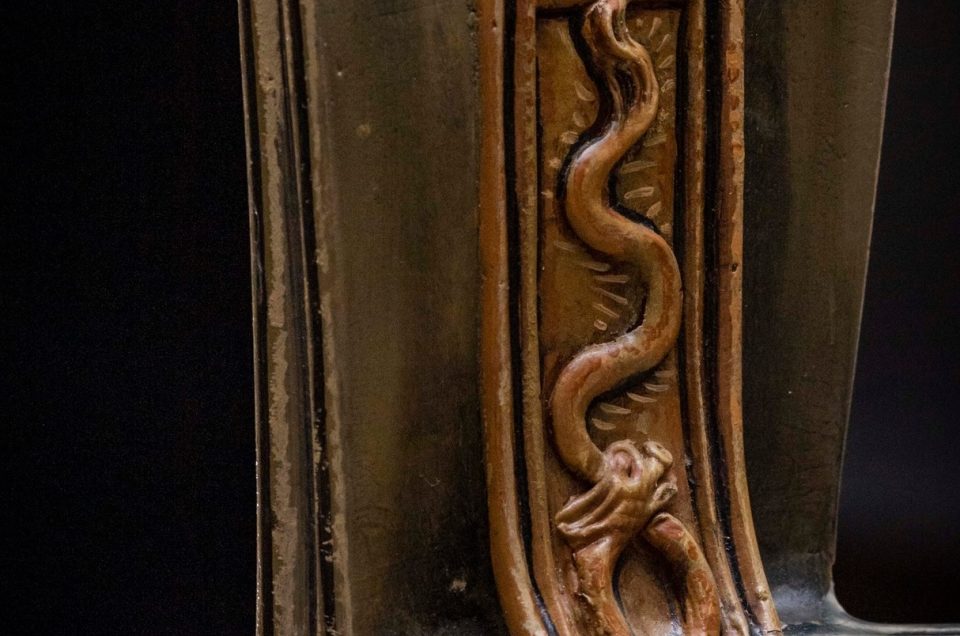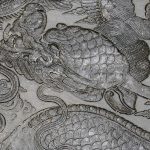An incense burner’s story
Made of grayish-blue glazed ceramic, the incense burner in the An Bien collection stands 41cm tall with a mouth diameter of 23.5cm. Its shape is cylindrical with a high, flared mouth, decorated with rectangular sections featuring carvings of coiled dragons in the “saddle-shape” motif characteristic of Mac dynasty art. These designs are enclosed within rectangular or square floral patterns on the mouth’s rim or decorated with blooming lotus motifs on the body. The incense burner is tied to our history, embodying the shape and patterns of two types of bronze drums produced by Vietnamese people.
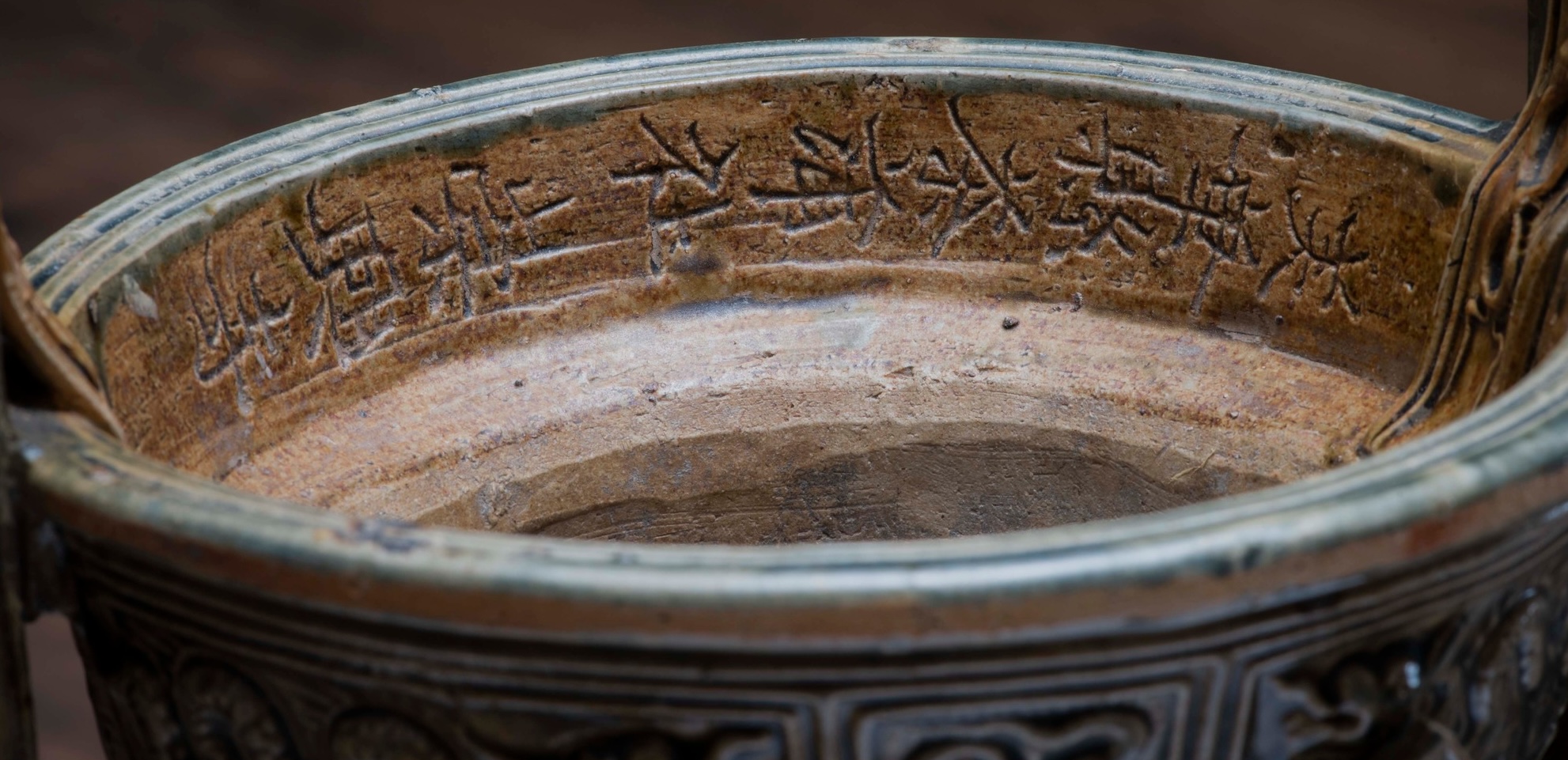
The bottom part of the incense burner resembles a Dong Son drum, which date back over 2,000 years. Researchers have encountered other artifacts in the upright shape of a Dong Son drum, but this incense burner is the only one with a downward-facing shape and a body clearly divided into three parts and decorated with short parallel lines and consecutive triangles at the base. The incense burner is also adorned with lotus flower patterns characteristic of Muong drums (also known as Heger Type II drums). The Muong drum inherited features from the Dong Son drum, appearing from the beginning of the Common Era to the Le Trung Hung dynasty (16th – 18th centuries).
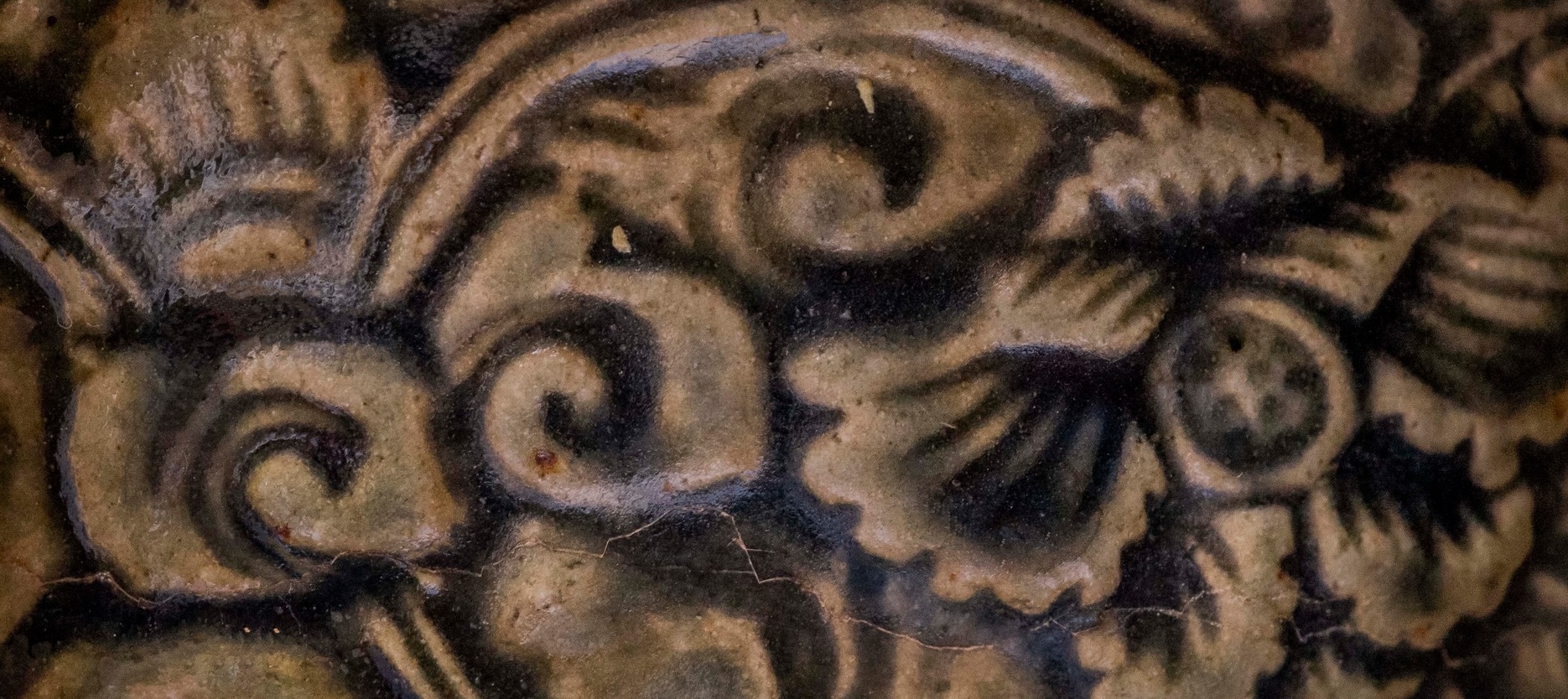
The incense burner’s neck is nearly cylindrical and adorned with lotus flower motifs and twisted cloud patterns. Inside, there is the character “Đại tự”, which means “Buddha”.
The base of the incense burner takes the form of a Dong Son bronze drum, characterized by its bulging middle, decorated with patterns that also incorporate elements from Muong bronze drums, such as lotus petal designs and triangular motifs.
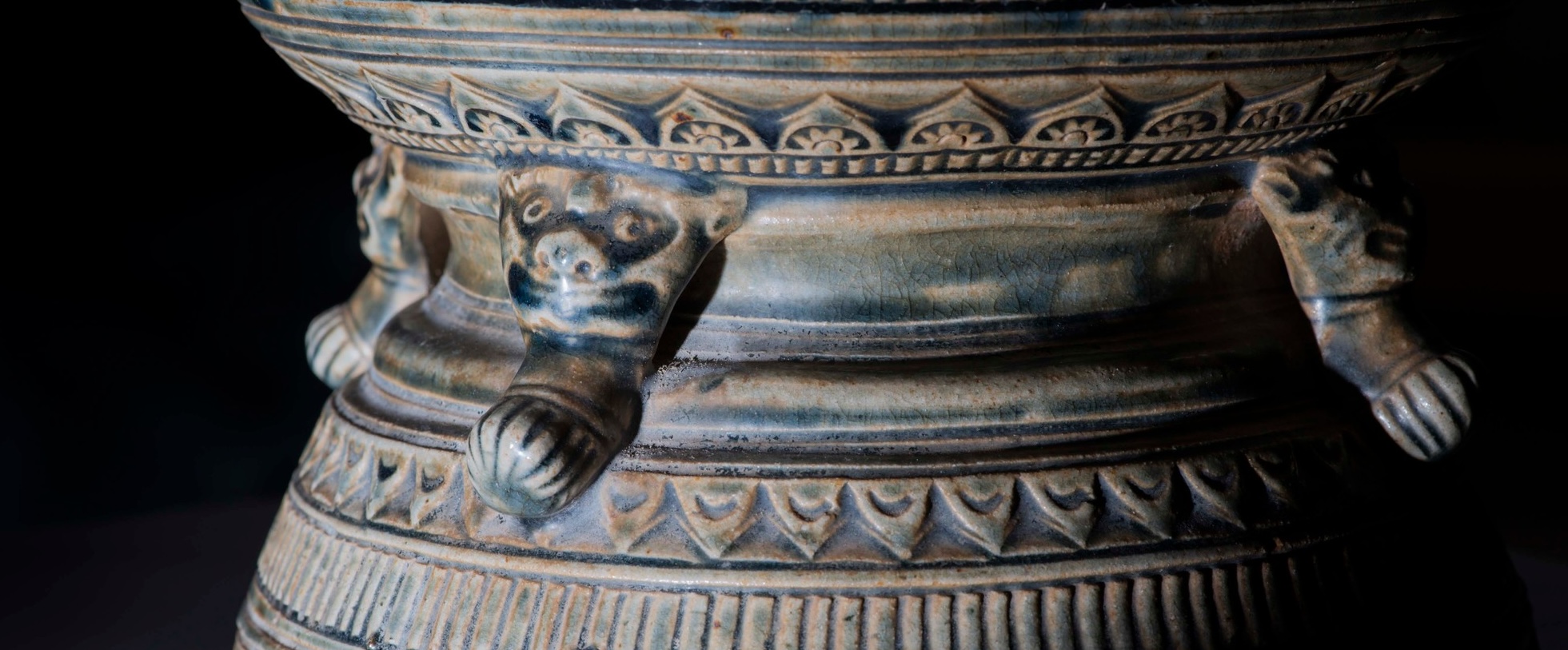
A four-headed animal figure is located between the middle and back of the drum. It has round eyes, sharp ears like those of a bat, and even a nose and mouth that make it look like the head of a bat. According to legend and feng shui, this image symbolizes happiness. This association came about because the word for “bat” (Bức) sounds like the word for “happiness” (Phúc). For this reason, many temples and pagodas are decorated with images of bats.
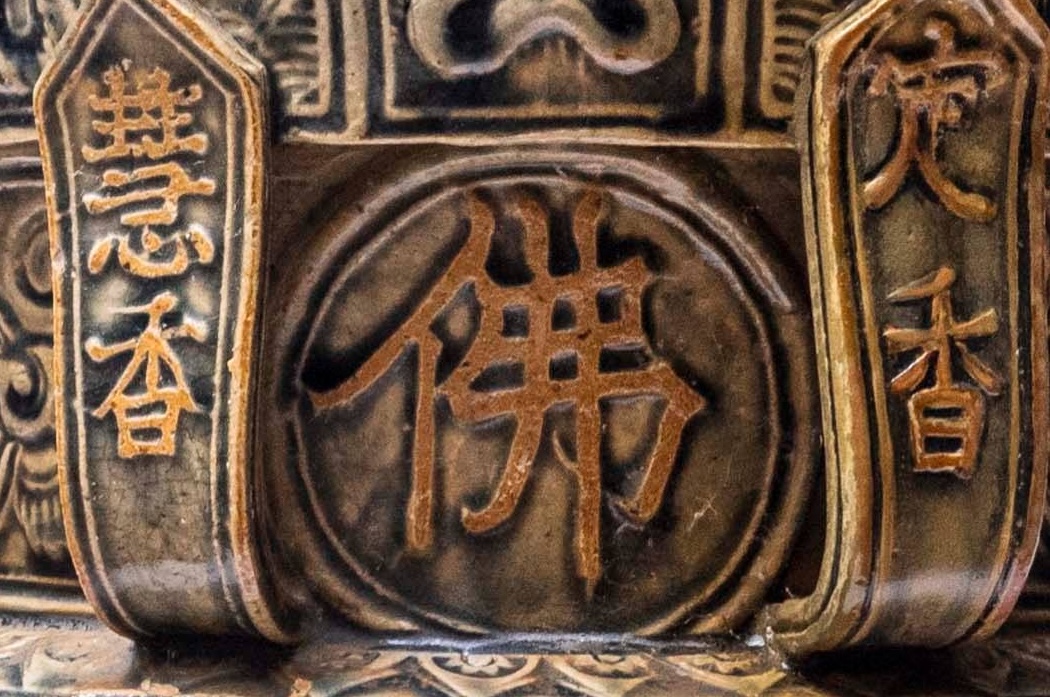
On the outer surface, there are two prominently raised and intricately coiled dragon handles. There are four smaller handles on the body, each one with a raised Chinese character: “Định Hương”, “Huệ Hương” (also known as Tuệ Hương), “Giải thoát hương” and “Giải Thoát Tri Kiến Hương”. These words come from the Buddhist “Nguyện Hương” (Incense Prayer), which conveys the wish that the smoke of the incense burnt as an offering to the Buddha will turn into vast fragrant clouds that will spread across the ten directions to reach Buddhists everywhere.
